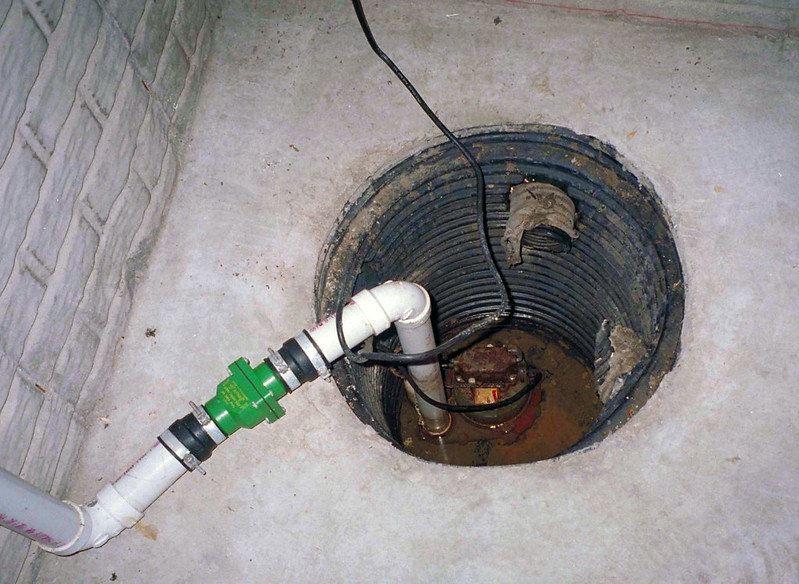Our homes are filled with appliances – the air conditioner, ceiling fans, garbage disposal unit, the heater, oven, refrigerator, the washer and dryer, water heater, and others – but, the one that should be in every home with a basement is the sump pump.

Approximately 95% of all homes with basements will, eventually, experience an issue with water. Even just one inch of water has the capability of resulting in thousands of dollars’ worth of damage and a vast array of complications. The good news is, by having a sump pump in place, this can be avoided. Continue reading to learn more about sump pumps and why you should have one.
What is a Sump Pump?
A sump pump is a type of appliance that is installed at the absolute lowest point in the basement. Its intent is to prevent flooding and to ensure that the interior and exterior surrounding areas of the home are kept dry. It also acts as a type of protectant to the home as it stops potential moisture damage and the development of mold and mildew that commonly accompanies the presence of moisture.
Who Needs a Sump Pump?
In most instances, anyone that has a basement should have a sump pump installed within their home. If there is a high water table where you reside, this type of appliance should be installed to handle the water that will seep within the basement and/or foundation region during periods of heavy rain and/or when excessive snowfalls.
In some instances, these moisture sources only cause dampness. In other cases, the water sources may result in an immense degree of flooding. Homeowners should know, though, that even small traces of water have the potential to result in massive damage and expenses.

How Does a Sump Pump Work?
In nearly all sump pump appliances, there are two basic components. These are the float switch and the mechanical pump. These are part of a larger component that resides within what is referred to as the “sump pit”, which is placed at the lowest level within the basement. When water makes its way into the basement, it will accumulate to a certain point of rising. Once high enough, the float will lift and will automatically activate the mechanical pump.
Once activated, the sump pump will start to suck out the water and move it away from the basement through the means of a discharge pipe. The discharged water is then pumped into a dry well, a storm drain, or a special detention pond.
While most newer homes of today contain a sump pump, it is often necessary to retrofit older homes with this appliance.
Are There Different Types of Sump Pumps?
To date, there are two types of sump pumps available to homeowners. The first is referred to as the “submersible”. It is a clean system that operates quietly. In most instances, the machine is covered and it is safe for homes with children and pets.
The second type is called the “pedestal” sump pump. It is the cheapest type because it does not include an enclosure for the motor. While highly economical, it is louder than a submersible unit and does not possess the same type of safety features when it comes to kids and pets; however, it is easier to maintain, work on, and repair, should complications arise.
The Benefits
In addition to preventing flooding in the interior region of your home, there are many other benefits associated with the installation and utilization of a sump pump. The following highlights the main advantages:
- By eliminating moisture in the basement area of the home, there is a reduced chance for dangerous substances – such as fungus, mildew, and mold – to grow in the area and spread to other portions of the home.
- When there is no moisture in the basement, common pests such as rodents, termites, and other types of insects are not attracted to the region.
- Metal appliances – such as a washer, dryer, and/or a hot water heater – are less likely to suffer the effects of rust and corrosion when placed in a basement that has a sump pump.
- When moisture is eliminated from the basement, the paint and other materials on the walls have less of a chance of deteriorating or peeling.
Sump Pump Professionals
When you have a sump pump installed in your home, it is imperative that the task is done by a plumbing professional. In addition to ensuring safe installation, these professionals will be able to handle any and all issues that arise with the appliance.
The two most common being the loss of power and the failure of the motor.
If you live in an area with a lot of rain and/or snow, it is important to have a battery backup unit placed on the appliance. A professional will be able to determine which battery backup is best for your unit.
In addition to ensuring optimal power and backup power, sump pump professionals will also be able to ensure that the discharge pipe of the unit is able to accommodate the amount of water that the appliance handles, as well as its rate of flow.
They will ensure that there are no backflow issues and that your basement is kept as dry as possible. Finally, these professionals will ensure that the float switch is operating appropriately and that there are no issues with your motor.
If you have a basement, Reynolds Plumbing can help you. We do not just install the appliance, but we also maintain the pump and are capable of making any necessary repairs.
Water damage can result in many problems – not just with your home, but with your health, too. Ensuring that you have a sump pump in your basement can avoid these complications. Call us right away.

